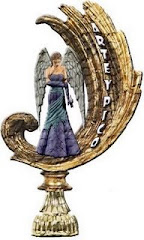I was on my way home from the grocery store when I saw it: there on the road before me was a roadrunner. I suppose for those from this state it is no big thing, but for me it’s like seeing a unicorn. This is a bird of myths and cartoons- a bird seen in books but not in real life. But, there it was before me and I stopped my car to watch.
It ran off to the side of the road, lowering its head and tail as it ran. Then it paused and raised its head and tail before running a few steps again. The bird was on the hunt with the prowess of a Hollywood dinosaur. Its wary eyes stalked its prey and when a butterfly flitted overhead the bird gave chase, running, then hopping into the air before giving that up as a lost cause. Last I saw it was heading over a ridge into the desert running as only a roadrunner can.
At home once again I watched the birds at my feeders. The typical house sparrows, house finches and mourning doves crowded each other for positions, but then I saw something different! One sparrow had white stripes on its head—a white crowned sparrow! The first I’d seen in the canyon, and here it was at my feeder.
I’ve tried to minimize my feeders since the death of the house finches. Now I only have three, though I did break down and buy a quail block again on Friday. I’d only found one dead finch about a week after the other died until Friday when I discovered another dead finch by the block wall. Only the house finches are dying, and I have yet to find anyone who cares. I shall try emailing the Cornell Lab of Ornithology and see if they take an interest. Now that I’ve joined my local Audubon perhaps they can help. I clean my birdbath weekly with bleach and carefully maintain my feeders. I do not know why these birds are dying. If the birds weren’t drawn to my yard would I even notice their deaths?
I certainly notice their lives. They bring joy to mine. When I see the birds splashing in my birdbath I smile and watch. When the Gila woodpeckers come to my peanut feeder I marvel at their colors with their zebra striped backs, their tawny bodies and red caps. I like their laughing chatter when they fly into my yard and out again. It sounds so wild. In this tame world I need some wild.
What amazes me here in Sycamore Canyon is the variety I’m able to see. I can start my morning with Gila woodpeckers and mourning doves. Before long the hummingbirds arrive to fill up on nectar. The house finches and house sparrows are regulars, and now and then I’ll catch the flash of lesser goldfinches as they flutter in to feed. Sometimes a curved-billed thrasher hops the wall and drinks from the birdbath, or, perhaps a cactus wren or canyon towhee. The evening is when I’m most likely to see the rock wrens in my yard, but at anytime during the day I can hear their ringing call from the neighbor’s rooftops. At dusk the lesser nighthawks wing overhead in their erratic moth-like flight and deepest night brings the hooting of great-horned owls.
Here in Sycamore Canyon I am reminded daily of what is at risk as humans encroach on wild places. We deserve a place on this earth too, but can’t we be good neighbors to the wildlife around us? I, for one, do not want to live in an artificial and totally manmade world. I need stars in the sky, moonlit nights, saguaros in the desert, and tossing tree branches. I want to hear the gurgling of a creek as it tumbles over stones that flash in a rocky mountain sun. I want to always be able to hear elk bugling in autumn during the rut. I hope we always have sage grouse dancing on leks in spring and swallows in summer. I hope our world is always full of bird songs and birds.
It ran off to the side of the road, lowering its head and tail as it ran. Then it paused and raised its head and tail before running a few steps again. The bird was on the hunt with the prowess of a Hollywood dinosaur. Its wary eyes stalked its prey and when a butterfly flitted overhead the bird gave chase, running, then hopping into the air before giving that up as a lost cause. Last I saw it was heading over a ridge into the desert running as only a roadrunner can.
At home once again I watched the birds at my feeders. The typical house sparrows, house finches and mourning doves crowded each other for positions, but then I saw something different! One sparrow had white stripes on its head—a white crowned sparrow! The first I’d seen in the canyon, and here it was at my feeder.
I’ve tried to minimize my feeders since the death of the house finches. Now I only have three, though I did break down and buy a quail block again on Friday. I’d only found one dead finch about a week after the other died until Friday when I discovered another dead finch by the block wall. Only the house finches are dying, and I have yet to find anyone who cares. I shall try emailing the Cornell Lab of Ornithology and see if they take an interest. Now that I’ve joined my local Audubon perhaps they can help. I clean my birdbath weekly with bleach and carefully maintain my feeders. I do not know why these birds are dying. If the birds weren’t drawn to my yard would I even notice their deaths?
I certainly notice their lives. They bring joy to mine. When I see the birds splashing in my birdbath I smile and watch. When the Gila woodpeckers come to my peanut feeder I marvel at their colors with their zebra striped backs, their tawny bodies and red caps. I like their laughing chatter when they fly into my yard and out again. It sounds so wild. In this tame world I need some wild.
What amazes me here in Sycamore Canyon is the variety I’m able to see. I can start my morning with Gila woodpeckers and mourning doves. Before long the hummingbirds arrive to fill up on nectar. The house finches and house sparrows are regulars, and now and then I’ll catch the flash of lesser goldfinches as they flutter in to feed. Sometimes a curved-billed thrasher hops the wall and drinks from the birdbath, or, perhaps a cactus wren or canyon towhee. The evening is when I’m most likely to see the rock wrens in my yard, but at anytime during the day I can hear their ringing call from the neighbor’s rooftops. At dusk the lesser nighthawks wing overhead in their erratic moth-like flight and deepest night brings the hooting of great-horned owls.
Here in Sycamore Canyon I am reminded daily of what is at risk as humans encroach on wild places. We deserve a place on this earth too, but can’t we be good neighbors to the wildlife around us? I, for one, do not want to live in an artificial and totally manmade world. I need stars in the sky, moonlit nights, saguaros in the desert, and tossing tree branches. I want to hear the gurgling of a creek as it tumbles over stones that flash in a rocky mountain sun. I want to always be able to hear elk bugling in autumn during the rut. I hope we always have sage grouse dancing on leks in spring and swallows in summer. I hope our world is always full of bird songs and birds.












